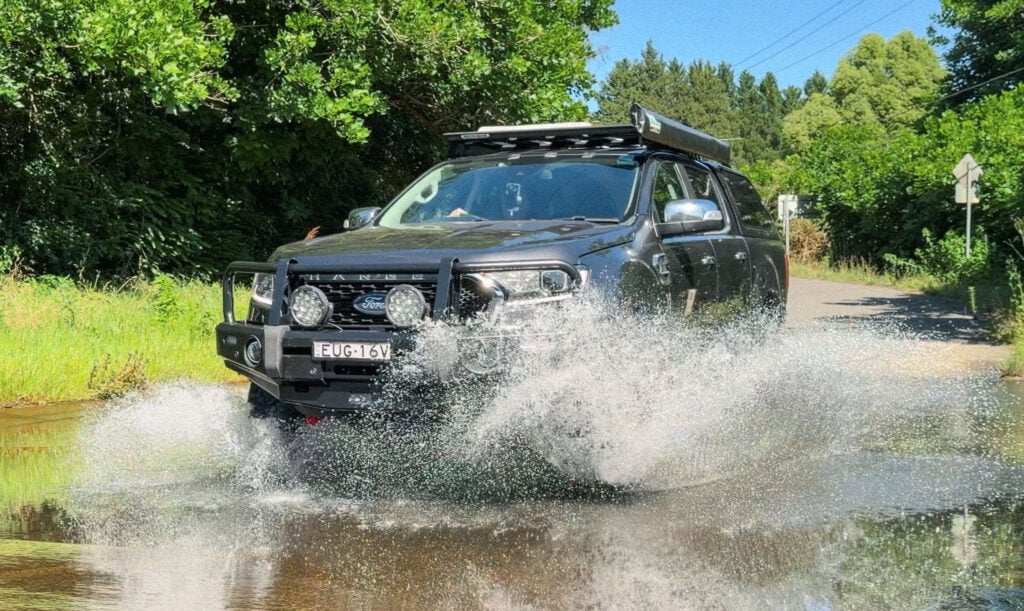Here I am in the new Lamborghini Huracán, waiting for the light at the end of the Ascari circuit’s pit lane to jump from red to green.
My hands are trembling like I’ve just drunk a litre of espressos; the anticipation of driving the long-awaited baby Lambo is too much. But these initial quiet moments offer a good chance to take in the all-new interior.
Despite being longer and wider than the Gallardo it replaces, claustrophobes need not apply, as the narrow bucket seat restricts movement and the small windows allow little of the streaming Spanish sun into the cabin. The windscreen stretches seemingly all the way to your feet, but the rear-view mirror is full of V10 heat haze and over-the-shoulder visibility is nil.

The centre console accommodates a set of buttons and dials instantly familiar to any Audi owner, a row of classic rocker switches for electric windows, hydraulic nose lift, ESP and the like and, hidden beneath a red cover, the all-important starter button.
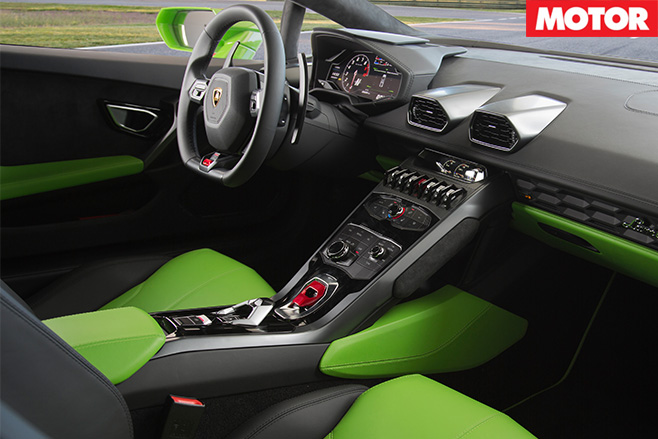
All-wheel drive transfers the power to the ground and enables this baby bull to hit 100km/h in a launch control-assisted 3.2sec and keep charging all the way to 325km/h. “Right now, we have a small advantage over the Ferrari 458,” claims Lamborghini chief engineer Maurizio Reggiani, “but the next round of updates will almost certainly produce a new leader of the pack.”
Aware the Huracán can only just hang on to the likes of the McLaren 650S and Porsche 911 Turbo S, let alone next year’s Ferrari 458-T, the Italians have added a large dollop of pantomime to proceedings. But though this Lamborghini can bark louder than most of its rivals, its personality is now more mature and less aggressive.
Case in point is the new Lamborghini Doppia Frizione (LDF, Lambo-speak for dual-clutch) gearbox, which bites harder and faster than the Gallardo’s dreaded e-gear single-clutch ‘box yet, at the same time, can be totally fluent and seamless. Even more so than the Aventador, the Huracán is two cars in one, and key to this split personality is the new ‘Anima’ system.
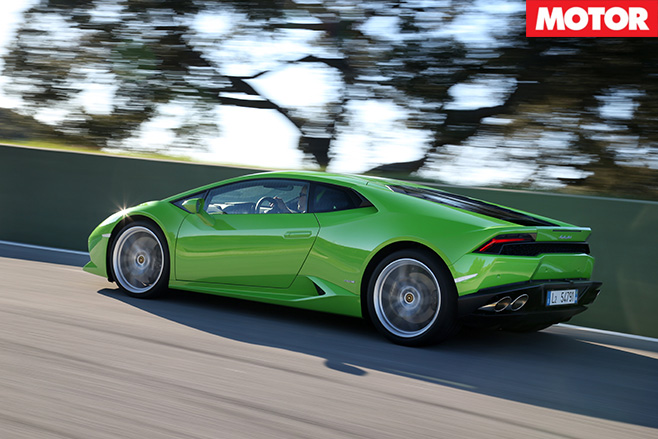
It’s these last two features that are arguably the most controversial of Sant’Agata’s new charger. Unlike the standard electro-mechanical system, Dynamic Steering varies its ratio depending on road speed, from a super sharp 9:1 around town to a relaxed 17:1 at autobahn velocity. In addition, it’s able to make tiny corrections to combat under or oversteer.
Where better to test all this than the torturous twists and turns of the Ascari race resort on the hills above the Costa Del Sol? With no ability to mix and match Anima settings – “we don’t want to confuse the driver,” says Reggiani – it’s straight into ‘Corsa’ and into the fray.

Corsa mode engaged, the LDF gearbox fires through changes with whiplash ferocity and while the all-wheel drive system is clearly a bonus as far as traction and stability are concerned, the freedom of a racetrack brings its otherwise well-concealed tail-out antics to the fore.
No more than 50 per cent of the power can be diverted to the front wheels and 100 per cent rear-drive is a possibility under certain conditions. A mechanical limited-slip rear diff provides extra grip.
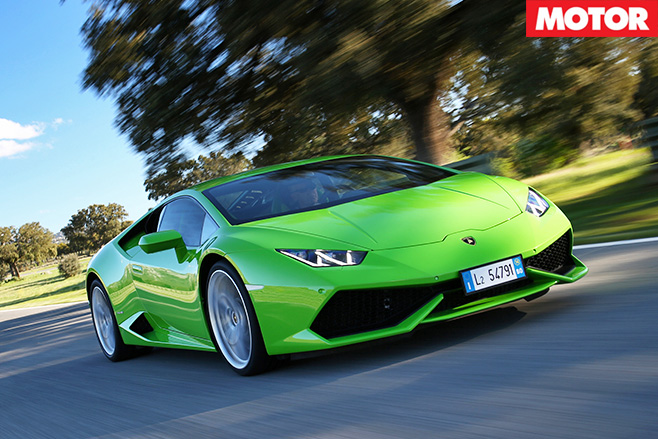
Initially, the ESC seems overzealous, but after 20-odd laps, as the tyres start to melt and the car begins to fishtail out of second- and third-gear bends, the calibration is suddenly spot on.
By this time the huge carbon-ceramic brakes are hot enough that the braking markers can be treated with disdain, but even as the giant bespoke Pirellis (245/30 ZR20 fronts; 305/30 ZR20 rears) begin their funeral march the interaction between man and machine remains unfazed. Safe and sure-footed like a 911 Turbo S, you can push seven-tenths in this Lambo and still feel like a superhero in the twisty stuff, overdrive it and not be punished as long as ESC is active, yet expect total satisfaction when nailing a 10-10ths lap.
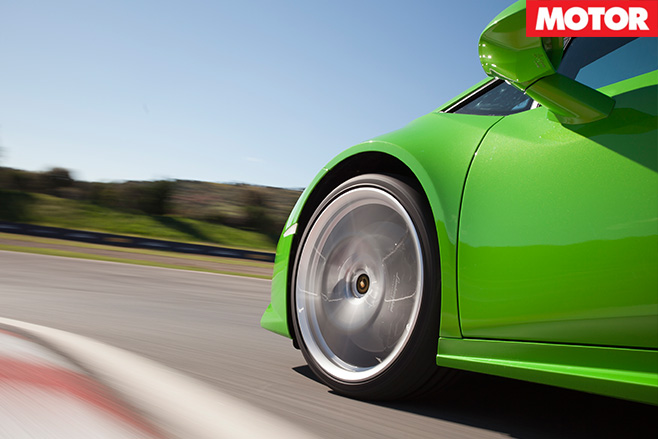
Though unable to secure the funds to develop an all-new segment-topping carbon-fibre structure, Lamborghini created its own version of the VW Group’s Modular Sports car System (MSS) that will also underpin the next-generation Audi R8, the range-topping version of which will also share the Huracán’s V10 engine.
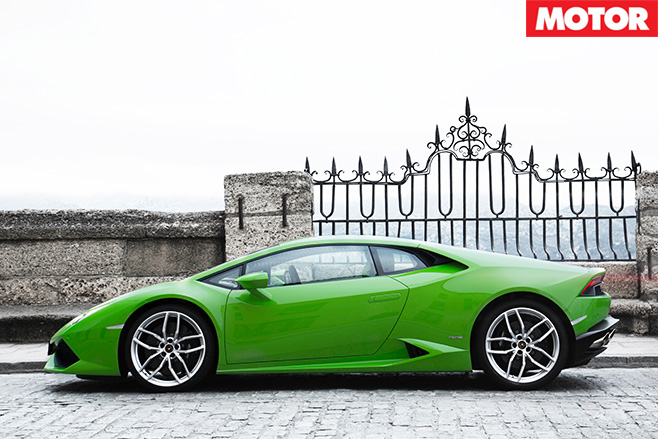
The next morning, an opportunity to try the Huracán on the famous Marbella to Ronda hillclimb route prompts a dawn getaway. Out on the road, away from the extreme velocities of the racetrack, the driving experience is no less beguiling.
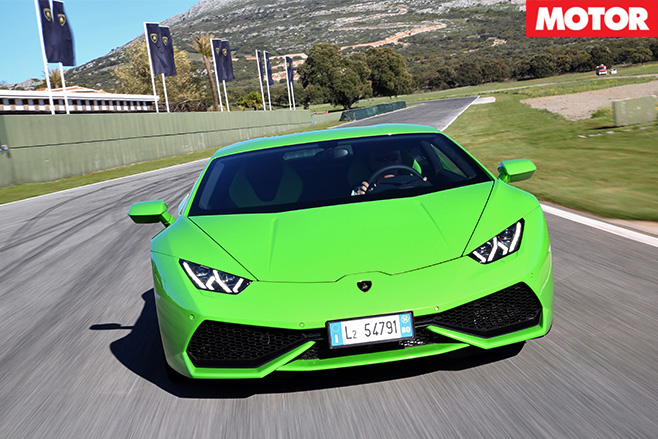
The greatest challenge the Huracán presents on the public road is operating the most basic of everyday functions. Like Ferrari, Lamborghini has moved the wiper and indicator controls to the face of the steering wheel, liberating space for a gigantic pair of shift paddles to be mounted to the steering column, and the reorganisation does require some acclimatisation.
Complaints are few. More space for larger drivers, and the claustrophobic, would be welcome, and smartphone connectivity is far from state-of-the-art in a car that is expected to top $400,000 when it lands in Australia later this year. But such petty issues fade from importance when considering the bigger picture.
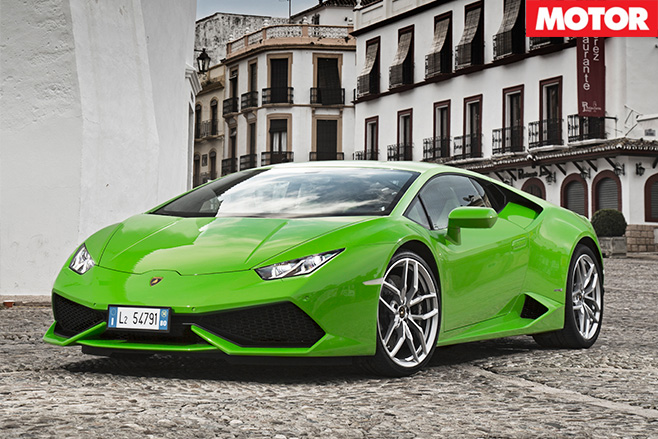
It’s arguably the most successful marriage yet between Italian character and German efficiency. If you like your Lambos coarse, loose and unrefined, go and look for a brutish pre-facelift Gallardo. But if precise handling is as important as making a wave on the approach to the golf/yacht/tennis club, check out the Huracán, whose talents are much more than skin deep.
4.5 out of 5 stars
Specs
Body: 2-door, 2-seat coupe Drive: all-wheel Engine: 5204cc V10, DOHC, 40v Bore/stroke: 84.5 x 92.8mm Compression: 12.7:1 Power: 449kW @ 8250rpm Torque: 560Nm @ 6500rpm Power-to-weight: 316kW/tonne 0-100km/h: 3.2sec (claimed) Top Speed: 325km/h (claimed) Consumption: 12.5L/100km (claimed) Emissions: 290g/km CO2 (claimed) Transmission: 7-speed dual-clutch Weight: 1422kg Suspension: double A-arms, coil springs, Adaptive dampers, anti-roll bar (f); Double A-arms, coil springs, adaptive dampers, anti-roll bar (r) L/W/H: 4459/2236/1165mm Wheelbase: 2620mm Tracks: 1668/1620mm (f/r) Steering: electrically-assisted rack-and-pinion Brakes: 380mm ventilated/drilled discs, 6-piston calipers (f); 356mm ventilated/drilled discs, 4-piston calipers (r) Wheels: 20 x 8.5-inch (f); 20 x 11.0-inch (r) Tyres: 245/30R20 (f); 305/30R20 (r) Pirelli P-Zero Price: $428,000 Positives: Still naturally aspirated; dynamically and visually rewarding Negatives: Vision; less power than its new rivals





